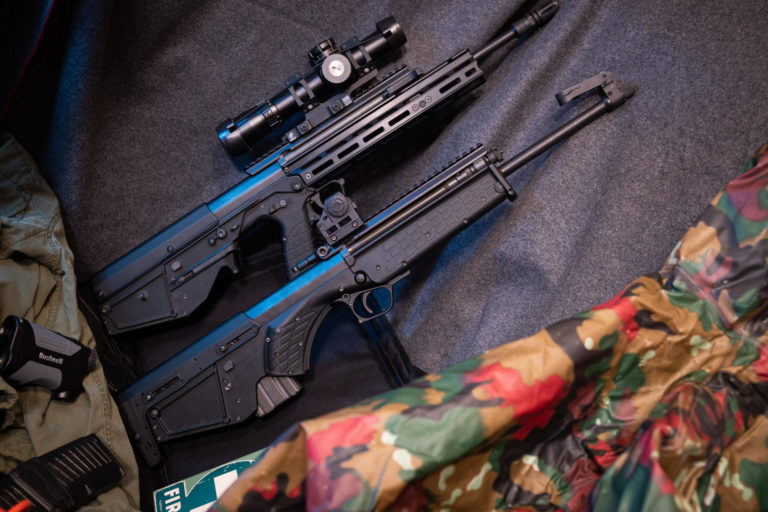
When the KelTec RDB launched all those many years ago, I quite liked it; being left-handed its downward ejection quickly proved itself very pleasant to shoot with and the design of its operating system impressed with its elegance. But, Canadian imports of the promising rifle were low, on account of booming US sales and then the subsequent launch of some very popular domestically produced non-restricted competitors kept the RDB off many Canadian shooters’ radar.
However, that was then, and this is now. And as all Canadian gun owners can assuredly attest to, now is a very different time indeed. Many of those aforementioned non-restricted competitors have undoubtedly been tragically lost in boating accidents all over the country. Furthermore, US sales have (largely) stabilized, and to top it all off, KelTec launched a whole new version of the rifle that’s arguably the most naturally Canadian version possible: A survival variant.
The Survival RDB
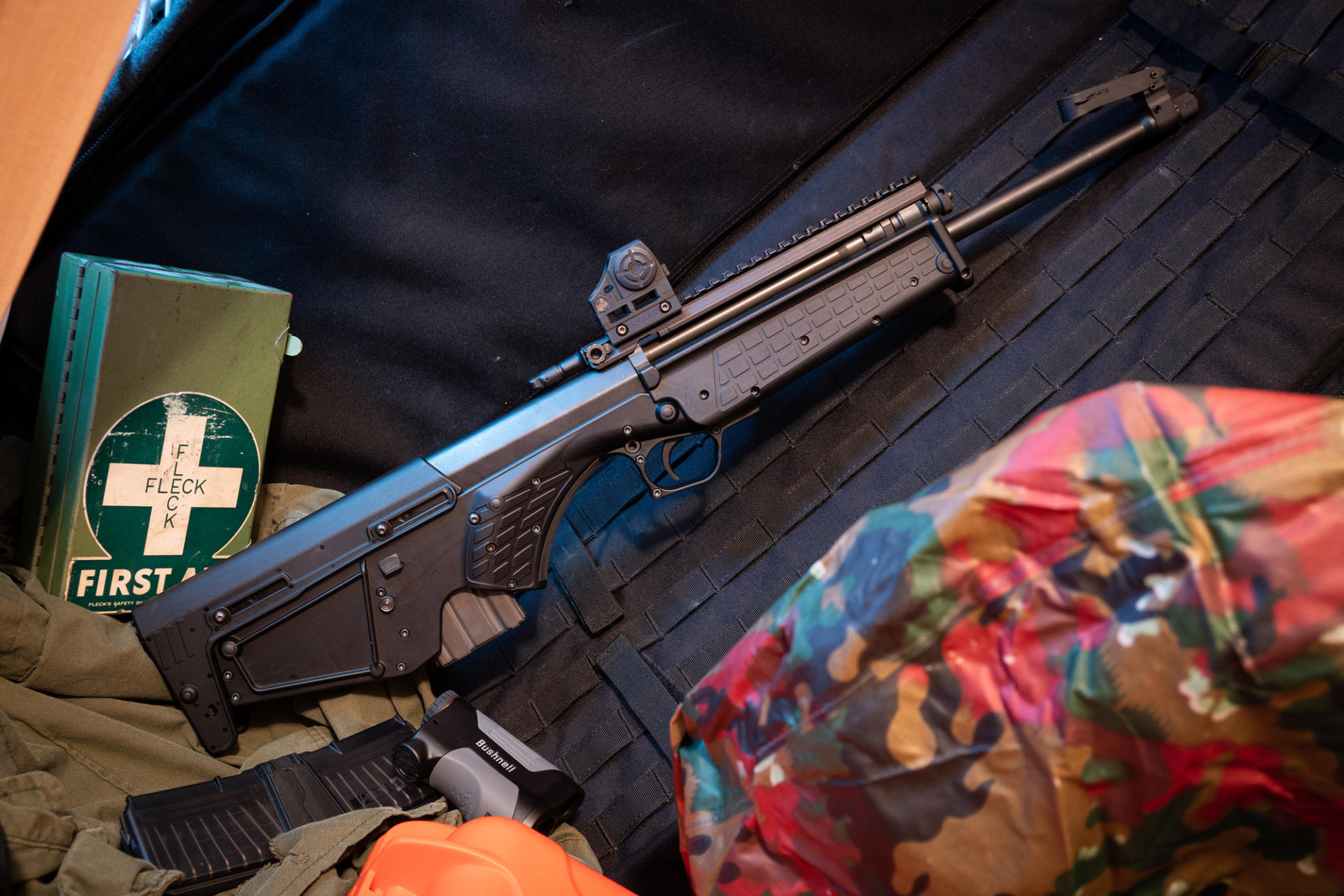
Now, this new model’s been known by a few different names, most commonly perhaps RDB-C (for “California Compliant”), but it’s now called the RDB Survival on KelTec’s website. Although now pitched as a lightweight, minimalist version of what’s proven to be a (spoiler alert) pretty well-thought-out gun, the now-disused nomenclature should be the biggest clue as to what makes the RDB Survival different: It doesn’t have a pistol grip.
And that’s a pretty big deal for a bullpup. Although technically defined as any firearm in which the trigger is positioned ahead of the chamber, most bullpups simply require a pistol grip as a matter of necessity; the required space occupied by their gas systems and trigger mechanisms yielding receivers that are simply too tall to grip like a conventional rifle. But not so with the RDB, which even earned marks in our 2017 review for being extremely easy to carry in the field thanks largely to its svelt, narrow portion behind the pistol grip - precisely where the RDB-C (or Survival model) puts its conventional rifle-style grip.
Now, changing the grip on a gun tends to change a few other things. For example, a lever-style safety isn’t nearly as ergonomic on a traditionally-stocked rifle, and so KelTec did away with the RDB’s 45-degree lever. Instead, the safety on the Survival rifle is a cross-bolt safety behind the trigger guard; very traditional. Also, because it prevents the hammer from falling, the hammer must be cocked for the safety to be engaged.
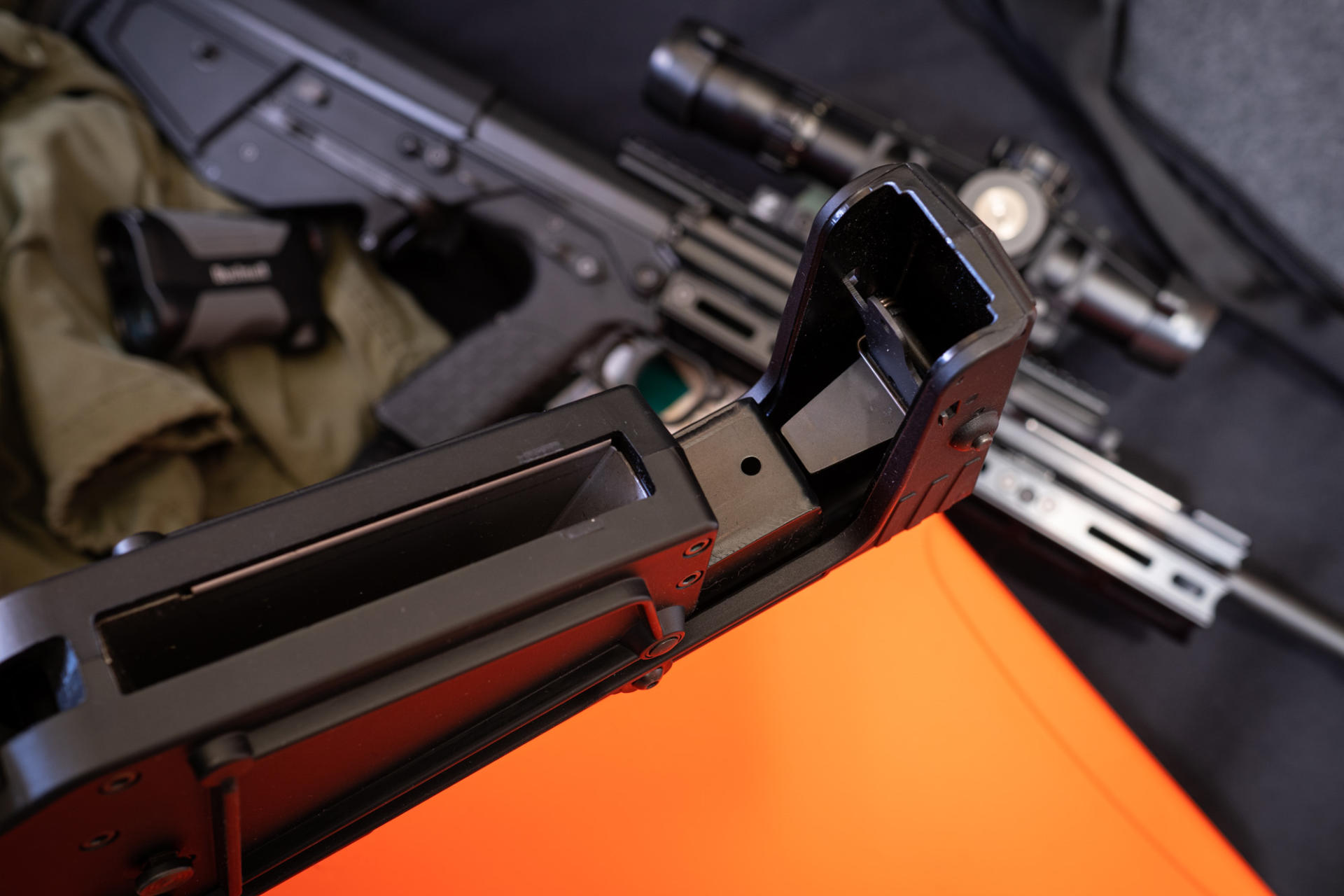
The magazine release has also been redesigned, as the standard RDB’s unique stamped spring-steel release lives where the Survival rifle’s grip is. Instead, magazines are released by way of a pair of push-buttons on either side of the Survival rifle’s stock, and honestly, it is arguably a better system and absolutely a more familiar one than the spring-spring retainer used on the standard RDB. The bolt release remains unchanged.
In terms of furniture, the RDB-C’s cladding is, as the name would suggest, someone more spartan. The handguard is substantially smaller in the hand than the normal rifle’s, and doesn’t have the rail at the 6-o’clock position. However, it does boast an integrated sling slot that wraps around one of the fixing screws, so it’s plenty strong. A corresponding rear sling slot can be found in the toe of the stock, which is integrated into the adjustable cheekpiece. Grab the stock and pull, and it slides rearward with the cheekpiece and locks into place; held there by a small lever that’s pushed up to collapse the stock again. The entire extension adds just about 1.75 inches to the length of pull, bringing the total length of pull to 14.75 inches when the stock is extended. That’s right about on par with your average hunting rifle. The only thing is, there is no intermediate adjustment to the stock. It’s either compressed to 13.25” or extended fully. If you want something in between, you’re going to need to think about modifications, inserts and spacers.
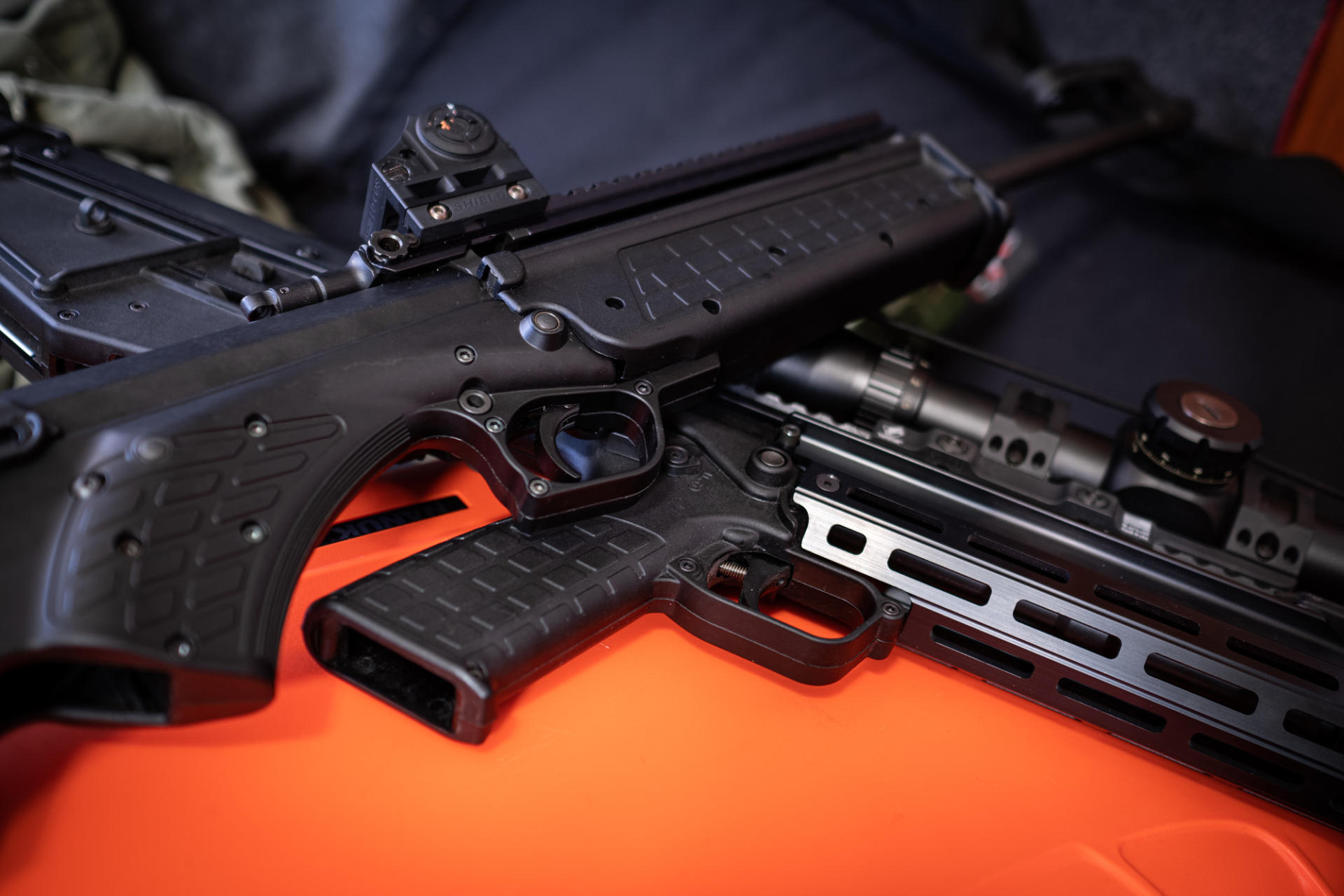
Finally, there are the sights. Like most folding sights, they’re pretty basic and best used as backup sights, if ever. The rear sight is a rudimentary cast piece, with a huge aperture, and it has a strange knurled area that makes it look adjustable - but it’s not. The front sight is quite a bit prettier, but doesn’t look especially durable and was ridiculously loose on our gun out of the box. A pair of set-screws index the sight on the front of the barrel, and had either backed out or never been tightened, leaving our sight to rotate probably about 20 degrees around the barrel. And had I any intention of ever using the folding sights, I suspect I might have been frustrated, but they’re simply too coarse to be any fun on a range. I tightened it down in what looked like the middle, and then went shopping for an optic. Likewise, the rear sight’s likely not long for this world either, as it folds down precisely where your hand wants to be when carrying the rifle and really kind of ruins one of the best parts about the RDB - how comfortably it carries.
How it Works
For those that missed our initial review of the RDB all those many years ago, what resides within the RDB’s space-age polymer chassis is in fact one of the more interesting rifle designs of the last few decades at least. Operated by way of a short-stroke gas piston system, the operating rod drives a conventional rotating bolt/carrier arrangement that has become pretty common across semi-automatic rifles, with the obvious exception that the larger-than-usual extractor lives at the 6-o’clock position. And it’s all controlled by the same infinitely adjustable gas block that caused us (and many other RDB owners) a lick of trouble by being slightly maladjusted. Rotating it left or right controls the flow of gas to the piston, and has a dramatic effect on the operation of the action; just don’t touch it after any more than a few rounds. If you need to, use the little holes drilled into it; they’re sized for the nose of a .223 round to be used as a wrench of sorts.
Inside, and focussing back on the gun’s heart; the bolt and barrel, I remain thoroughly impressed by the RDB’s design. Bullpups always cause people a little bit of trepidation; to be quite blunt every time the trigger is pulled there’s an explosion going off generating 55,000 psi of pressure mere inches from the shooter’s face. That simply is not a comforting notion. But KelTec’s done a metric ton to the RDB to make sure it’s as strong as it can be. For example, while most rifles that use a barrel extension like this machine a shoulder into the barrel for the extension to tighten up against, KelTec instead uses a barrel lock nut to fix the breech block in place - an adaptation of the same strategy that’s revolutionized the bolt-action rifle market over the last ten years.
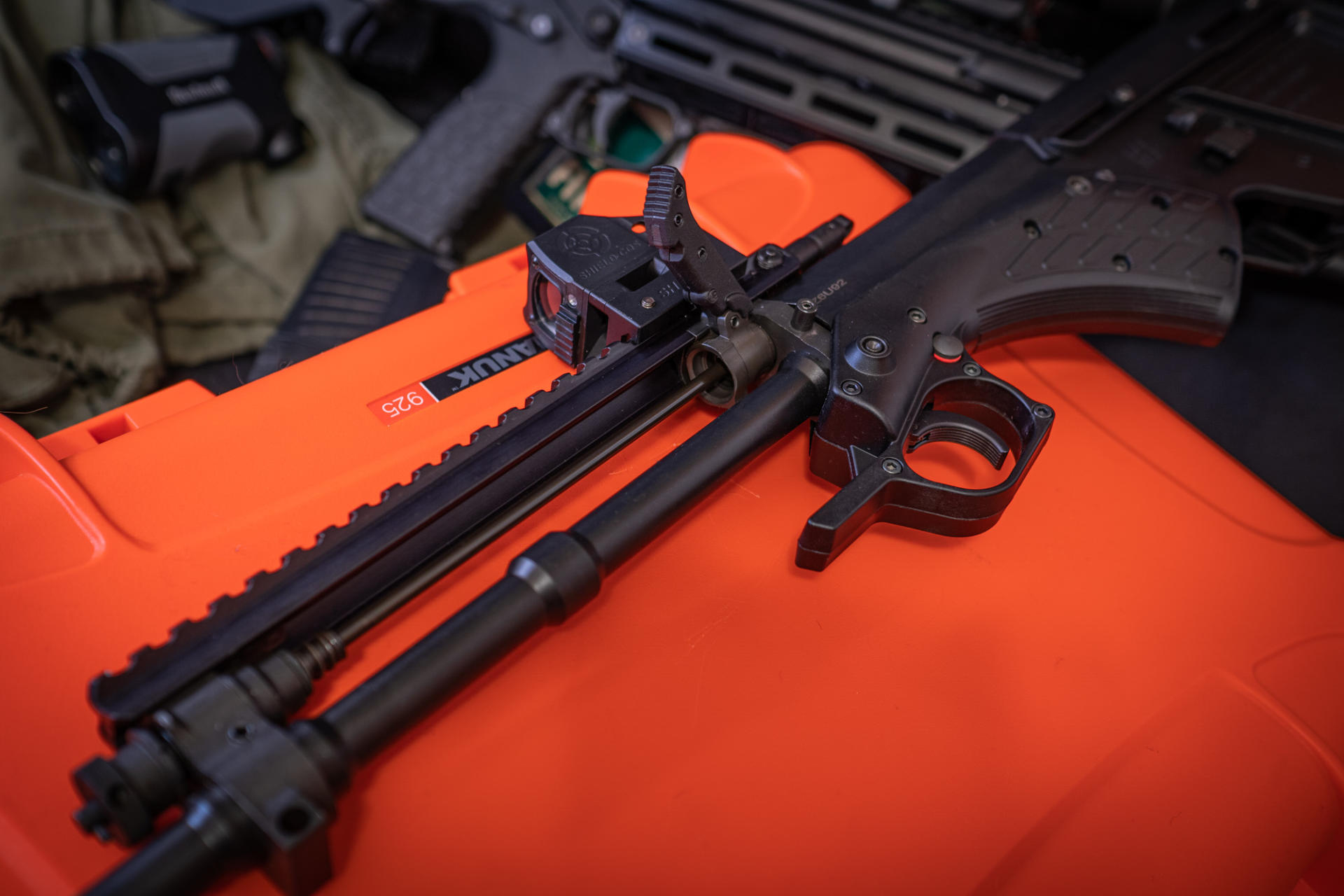
That not only means it’s a much easier rifle to produce and assemble (due to the headspace being variable due to the use of a locknut), but also a stronger one; machining a shoulder into the barrel for a barrel extension to tighten down on naturally means the threaded tenon must be rebated in diameter to produce the required shoulder. On the RDB, the barrel is simply threaded; the diameter you see going into the locknut is the diameter throughout. One less 90-degree cut in a pressure-bearing component is one less place for a stress fracture to start. And that same lesson is repeated on the bolt and chamber, where KelTec’s rounded off the five top lugs and their locking recessed for the same reason. It’s all to ensure that the RDB’s chamber, and all the bits near the shooter, are as capable of containing an errant overpressure situation as best as possible. And of course, up top, there’s a comforting piece of plate steel that serves as the formal upper receiver to provide a beefy last layer of defence.
And then of course there’s the ejection. Giving the rifle its name in a fashion that anyone familiar with the Canadian Forces logistics system can appreciate (RDB stands for Rifle, Downward-Ejecting, Bullpup), the RDB’s ejection happens just aft of the magazine, right under the rifle. Spent cases are pulled from the chamber, and ride right over the magazine on their trip to the rifle’s rear, where the dual ejectors and bottom-mounted extractor toss the spent casing down the narrow chute at the rifle’s rear behind the magazine. As the bolt goes forward from there, it snags another round, chambers it and the whole thing can begin again.
Now much has been made of the RDB’s extraction. Here’s the no-BS reality of it: If you’re right-handed, you likely won’t even know the difference between this and a conventionally-ejecting rifle. It also likely will cause a problem for you at some point, but the problem won’t be any more significant than the problems caused by right-ejecting guns, either - they’ll just be different problems. For example, casings can end up in breast pockets, or other breast areas with differing results. Also, they come out with some force, so if you’ve got a vinyl shooting mat or something like that, case necks will tear it up. But if you’re left-handed? Oh my. You’re in for a rare, carbon- and smoke-free treat that every right-handed person simply knows as “shooting.” Seriously. It’s a revelation. I’ve never been bothered by the ejection of semi-automatic firearms across my line-of-sight, but it sure is nice not to get a faceful of carcinogens and gun oil every time the wind is blowing uprange. Really nice. Righties, don’t take that for granted.
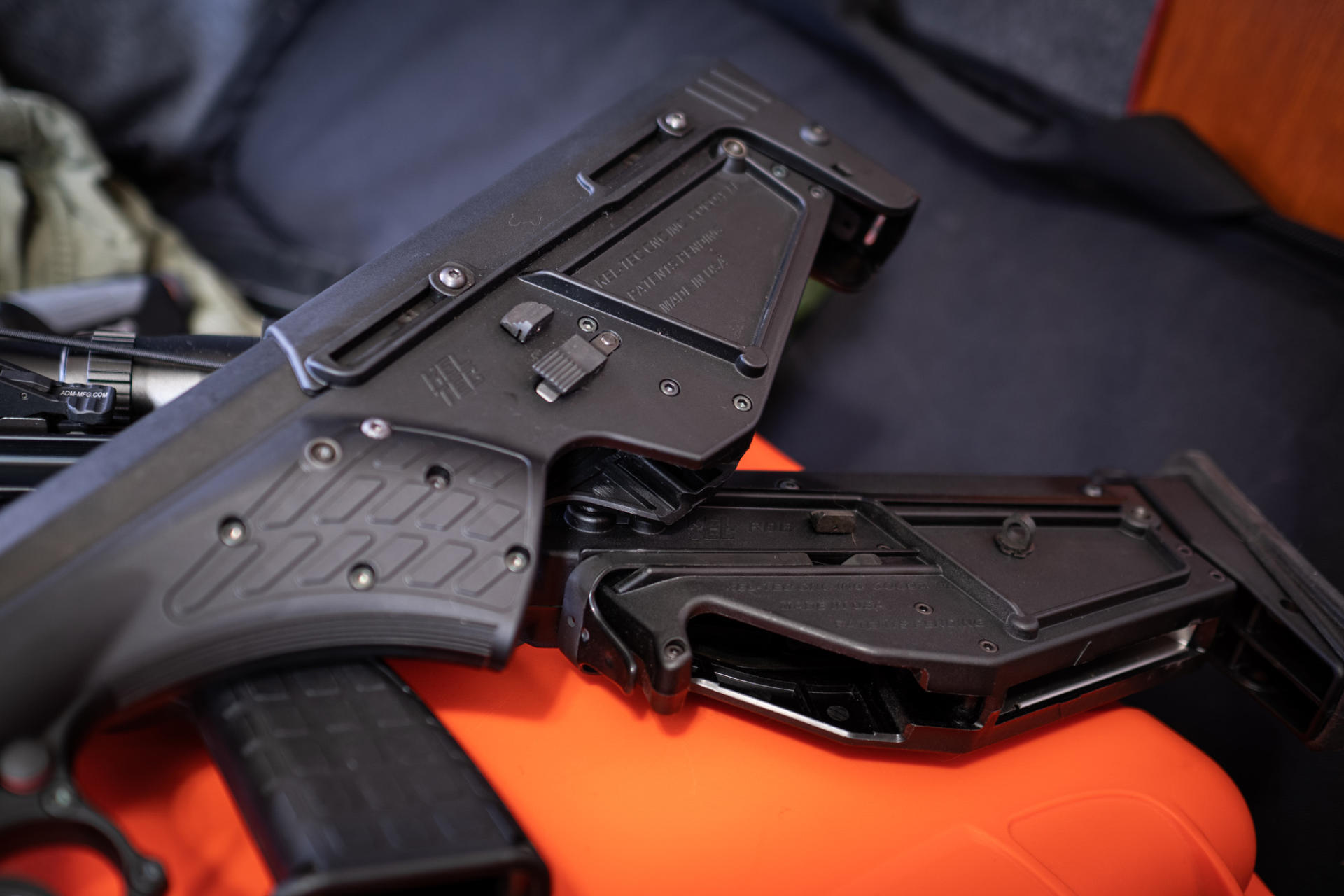
The only real issue is that this configuration; a bullpup with bottom ejection that happens aft of the magazine, is that it means the chamber is only accessible from the magazine well. That is to say, access to the chamber is severely reduced, and visually checking it is a bit of a pain since it means popping the mag and turning the gun over. That makes stoppages a bit slow to clear, but since no one’s shooting back and this is hardly intended as a competition rifle, it shouldn’t be a deal-breaker. The biggest bummer? If you’re a bit OCD it means you’re going to be taking the gun apart for cleaning a lot, since getting up into the locking recesses with a brush is a total pain in the ass. Thankfully, the upside of the chamber being so enclosed, and bolt’s operation being piston-driven, is that the chamber stays pretty clean.
In the Wild
At this point though, we can’t avoid the elephant in the room: The standard model RDB exists. And for us Canadians, there is absolutely zero difference between the standard RDB and this model, since the rifles are effectively the same internally; the differences are largely ergonomic. Which also presents its own problem for a review such as this: If the differences are largely ergonomic, how different can the Survival product really be?
And the answer is very. Surprisingly so. The revised grip, the narrow feel of the handguard, and the way the bullpup platform carries so much weight between the hands give the RDB Survival a very modern-lever-action feel. The plastic textured panels on the grip surfaces will never let you forget that it’s a product of the 21st century, but the rearward weight bias and that lithe front end will do their absolute damndest to make you think you’re holding a Savage 99.
This brings me to perhaps the biggest point I’d like to make about the Survival version of the RDB. Being so much more compact and frankly slick (even the Zytel castings have been smoothed over slightly), the Survival rifle is a semi-auto that truly handles like a conventional lever gun. By that I mean it’ll slide into a pretty conventional scabbard, it’ll trail carry in a single hand perfectly without you ever needing to worry about whacking either end on something accidentally (it’s just too short), it fits across a rifle rack or rest without a pistol grip to foul the bars, support, or controls, and it fits into and alongside packs more easily.
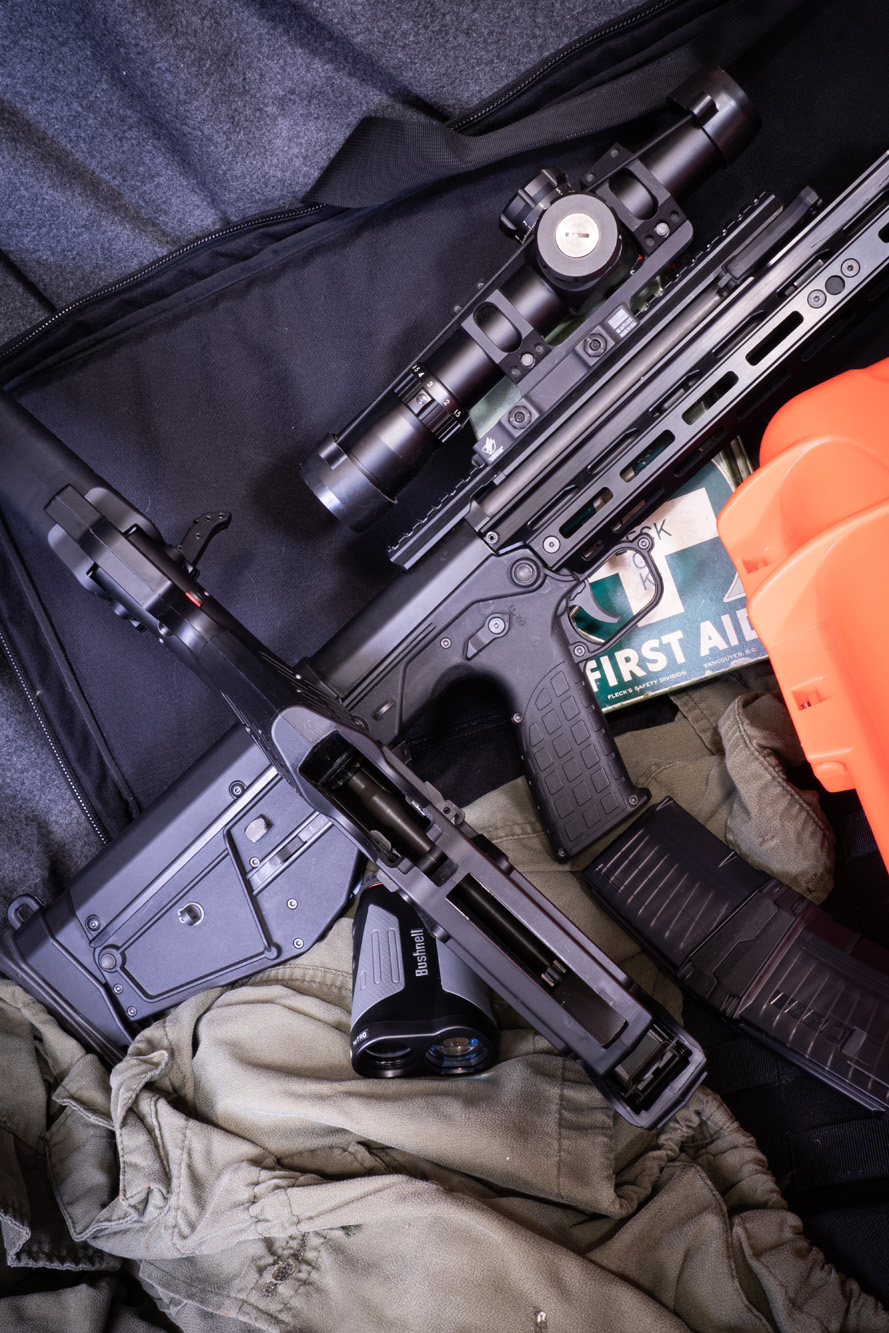
And none if that is said to denigrate the standard RDB. Rather, it speaks to the rifle’s intended purposes. This model is intended, obviously, as a survival rifle. A more recent derivative of the same platform, the RDB Hunter, uses the same gripless body of this Survival model, but without the flip-up sights and again serves as a testament to this slicker style of RDB’s intended market being those who spend more time carrying or packing a rifle than shooting it. On the contrary, if you’re shopping for a plinker or hobby rifle to shoot more than carry, the standard RDB’s feature’s are more in line with that goal.
Now, does that mean it shoots any worse? No. The barrel’s slightly longer than that in the standard RDB, but it’s not enough to make any appreciable difference to how these guns work, and the barrel profile remains unchanged from the standard model as well so it should handle heat just as well, too. The only difference is the trigger, where the Survival model boasts a steel shoe, and a different design that produces a significantly better trigger pull. Measured across ten pulls this gun averaged just 3 lbs, 2 ounces per pull (the standard RDB also photographed here averaged 6 pounds 9 ounces) and each two-stage break was smooth - but not entirely crisp. The first stage is just a hair spongy with some inconsistency to the pull weight through the travel, and you definitely feel a few linkages taking up slack on your way to breaking through that second stage. It won’t impress anyone accustomed to a good trigger on a conventional rifle, but to anyone familiar with bullpup triggers, it’ll blow minds.
The other adaptations made all work great, and in some cases are almost better than the standard RDB’s bits. Being so accustomed to pushbutton-style magazine releases, for example, the Survival’s release was a bit easier to adapt to, and the collapsible stock is a nice feature to have. The only other thing? If you only own standard-length magazines, you’ll likely end up spending a few bucks on short-body magazines whenever possible. If the whole point of the rifle is that it’s made handier by removing the pistol grip and slicking it up, standard-length magazines end up serving cross purposes in this application. Of course, if we lived in a country where they had a purpose, things might be different.
Spoilt for choice?
As someone that has owned both these rifles for some time (bought and paid for, in case you’re wondering), I honestly prefer the Survival variant. Were I still living in an urban setting where most of my shooting was happening at a gun range, and the story might be different; the gun case in my trunk not knowing the difference between a gun with a pistol grip or not. But I don’t, and so guns that can be more easily fitted to dirt bikes and into scabbards appeal more.
In terms of cross-compatibility, because that may be something many are curious about - the rails are, and the operating system appears identical, meaning things like charging handles should be cross-compatible as well. But, due to some significant changes to the casting the receiver, including those aforementioned ramped standoffs, handguards for the standard RDB and Hunter or Survival models are not cross-compatible without modification. However, Lucky Irishman Firearms produces a rail that not only fits, but also one that fits the longer-barreled Canadian-market guns, so that’s what’s pictured on this rifle in some photos. Its installation is, however, a bit more involved than the KelTec-made rail on the standard RDB.
Ultimately these days it’s probably going to come down to what you can find; although there are way more RDBs in Canada than there were when we first reviewed this standard rifle back in 2017, they’re still hard to come by. However, if you might have turned your nose up at the unorthodox looks of the Survival or Hunter rifles, it might be worth giving one a try. I think you might be surprised at just how familiarly comfortable something so unorthodox-looking can be!